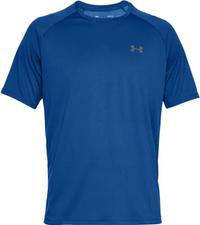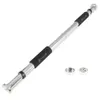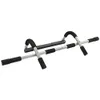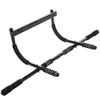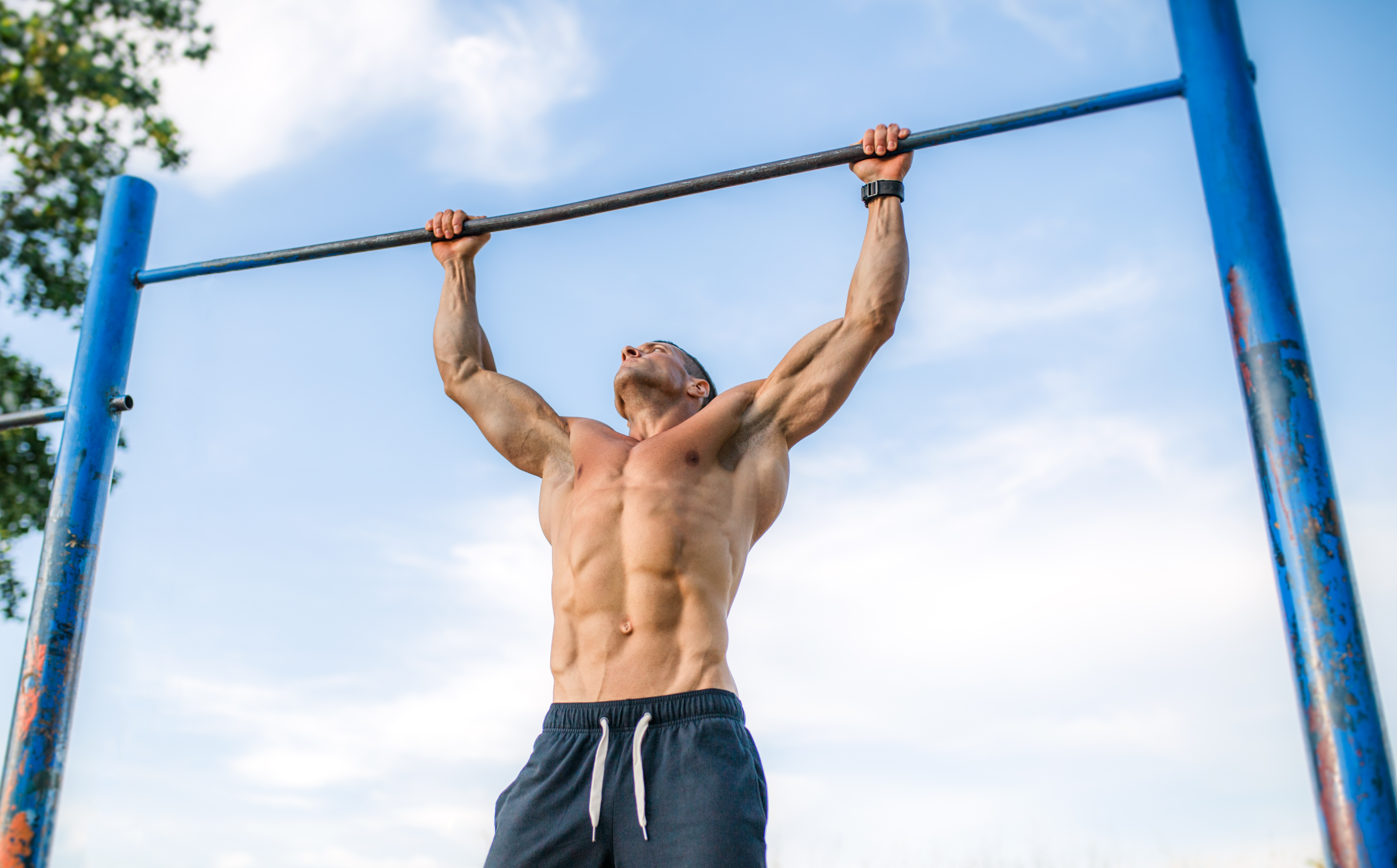
After what feels like a decade spent writing at my desk, I’m always desperate to stretch my back and shoulders — my posture is a weak spot, and yes, I do teach mobility for a living. But cat-cow, child’s pose, or downward dog just won’t always hit the spot. Then, I notice the pull-up bar in my local CrossFit gym.
Dead hangs are performed using a bar or similar and simply involve hanging from said bar for a set time. The hang can also act as the initiation of the scapula pull-up and other bar-based gymnastics exercises. Otherwise, you can just hang out there like I did and benefit from a deep back and shoulder stretch.
Not only do dead hangs feel good, but they can also relieve upper body tension, build strength and stability and improve posture. Here’s what I learned from adding a few minutes to my daily routine for a week.
How to do a dead hang
There are plenty of benefits of dead hangs, but before I dive in, here’s how to do them:
- Grip the bar shoulder-width apart with an overhand grip and fully wrap your thumbs
- Lift your feet away from the floor and hang from the bar without swinging
- Pull your shoulders down your back and squeeze them slightly together
- Keep your arms straight and relax your upper body
- Brace your core and glutes
- Slightly tuck your pelvis to prevent the spine from hyperextending
- Hold the position trying to stay relaxed without overly swinging
You might find your grip gives before your shoulders or arms fatigue, which is normal. Grip strength should improve over time if you incorporate dead hangs and other grip-based exercises like deadlifts into your routine.
Here’s what I learned from adding them to warm-ups and cool-downs for one week.
Under Armour Men's Tech 2.0 T-shirt: was $25 now $10 @ Amazon
The best-selling men's activewear t-shirt is now on sale and we can't get enough of it. This tee pulled in a whopping 92K reviews and counting...
My back and shoulders felt great
The dead hang is one exercise you need to strengthen your upper body without weights because it holds your muscles under isometric contraction. In other words, muscles don’t flex or extend. For most people, the exercise is a low-impact way to work your shoulders, arms, forearms, wrists, back (lats, traps, rhomboids), core stabilizers and decompress the spine.
Sign up to get the BEST of Tom's Guide direct to your inbox.
Get instant access to breaking news, the hottest reviews, great deals and helpful tips.
I’m a big fan of finding different ways to achieve the same goal, so this recent mix-up in my stretching routine was refreshing. Often, when deciding between stretching and mobility for warm-ups, I would always suggest ditching stretches until cool-downs, but the dead hang is actually an effective strengthening and activation exercise going into push or pull-based workouts.
Not only do dead hangs feel good, but they can also relieve upper body tension, build strength and stability and improve posture.
There are two types of hang — passive and active. Passive, as the name suggests, means relaxing into the hang to allow decompression of the spine and a good stretch. Active hangs involve contracting your whole body and pressing the legs together, which increases muscular tension. I recommend this variation if you’re practicing the hollow-arch positions associated with CrossFit kipping, muscle-ups and toes-to-bar.
I opted for passive dead hangs for time to relax. After one week of adding a few minutes daily to my routine, I felt taller, longer and less hunched. In my thirties, allowing gravity to do its thing generally feels like a bad thing, but for once, it feels amazing.
My grip is still terrible
Do smaller hands have weaker grip? It can be a problem for some, yes. My tiny hands struggle to grip for long periods, so my grip tends to go way before dead hangs fatigue my arms and shoulders. Of course, nothing changed dramatically over the week, but it did attune me to how much work I still need to do on grip strength.
Good grip is crucial to technical lifts and grip styles like the hook grip, which you’ll use for barbell exercises. Developing grip strength will help you perfect exercises like deadlifts, snatches, cleans and bar-based movements with less fatigue.
If grip is an issue for you, try different positions. A neutral grip (palms facing each other) using rings or similar tends to be the most accessible for beginners, whereas an underhand grip (palms toward you) helps target the fronts of the shoulders, lats and biceps. Overhand (my favorite style) is the best for working on grip and forearm strength. Unsure? Try a mixed grip — it might even help you hold for longer. Another option is to use a low bar and gently support your feet on the ground until you build foundational strength.
It felt functional (because it is)
Functional exercises mimic the types of exercises we, as humans, are primed for through years of evolution. Pushing, pulling, squatting, or climbing, for example. They can even be primal. So it’s no surprise that hanging counts as functional training.
Functional exercises strengthen the muscles, bones, joints and ligaments through a more natural range of motion that feels familiar during daily activities, meaning we can improve these movement patterns. Hence, dead hangs can help elongate the spine, relieve pressure on your back, increase shoulder range of motion and strengthen the shoulder muscles and stabilizers known as the rotator cuff muscles surrounding the scapulae (your shoulder blades).
In other words, you can build robustness.
But a little-known benefit of dead hangs comes in the form of breathwork. Breathing from a hang position allows you to breathe expansively rather than from a hunched position at your desk or on the couch. All of the benefits are, yep, you guessed it — functional.
Over the week, I built from 5 sets of 15 seconds to 3-4 sets of 30 seconds, finishing on a 60-second hold. Hang until you begin to lose form (try to avoid totally fatiguing), then rest — try to keep some in the tank so you can repeat the exercise, and build to longer efforts as you develop strength.
More from Tom's Guide
- Ditch planks — this 15-minute abs workout builds core strength with 6 moves and a resistance band
- Sleep apnea detection finally comes to Apple Watch — here's how to set it up
- 4 reasons you’re not building muscle in the gym — according to a strength and conditioning coach

Sam Hopes is a level 3 qualified trainer, level 2 reiki practitioner and senior fitness writer at Tom's Guide. She is also currently undertaking her Yoga For Athletes training course. Sam has written for various fitness brands and websites over the years and has experience across brands at Future such as Live Science, Fit&Well, Coach, and T3.
Having worked with fitness studios like F45 and Virgin Active, Sam now primarily teaches outdoor bootcamps, bodyweight, calisthenics and kettlebells. She also coaches mobility and stretching-focused classes several times a week and believes that true strength comes from a holistic approach to training your body.
Sam has completed two mixed doubles Hyrox competitions in London and the Netherlands and finished her first doubles attempt in 1:11.

